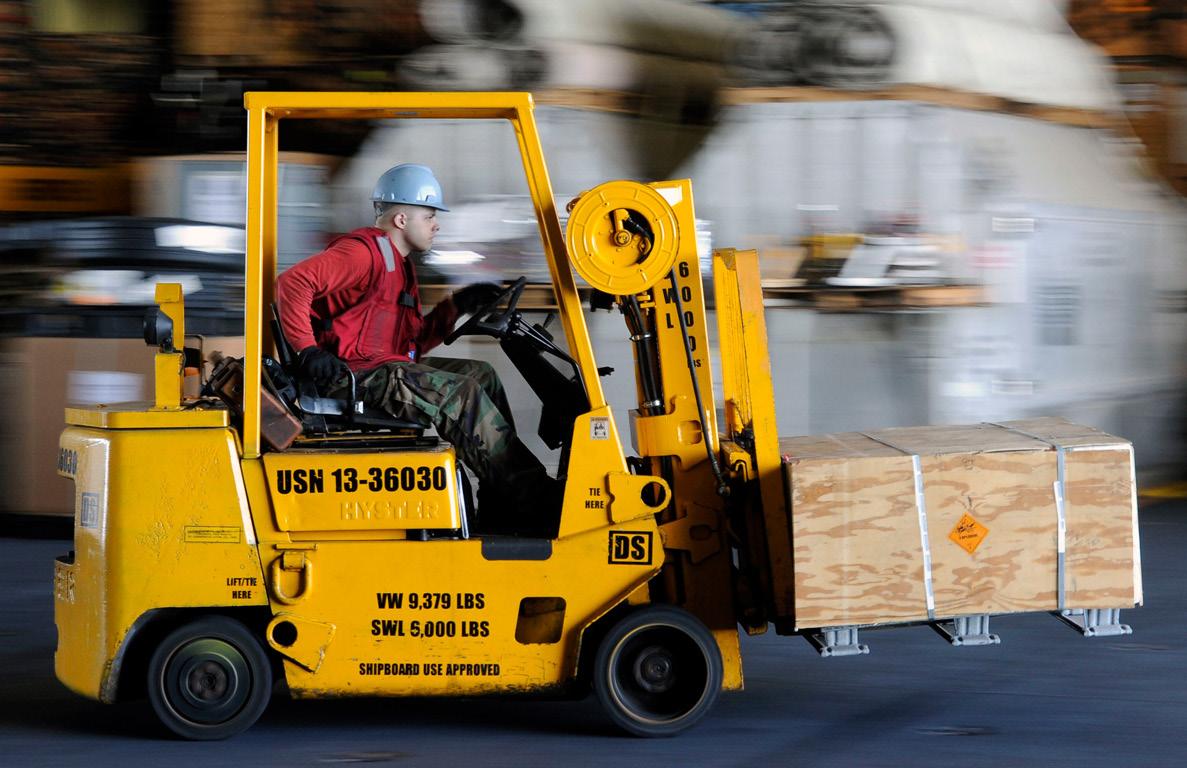
6 minute read
How does a telehandler work?
The telehandler has a range of capabilities, making it suitable for various work environments, such as construction, agriculture and waste and recycling. The equipment features a telescopic boom, and you can add various attachments to this, for different lifting functions, suspending loads etc.
Consequently, the telehandler is suitable for working across a diverse selection of sites, environments and terrains. The functions that the telehandlers perform can replicate the work of a forklift, crane, by adding the appropriate attachment. Changing these attachments is a quick process, due to the design of the telehandler, which makes the equipment all the more useful and versatile. This quick hitch design feature means that the telehandler operator can switch functions on demand, minimising the time and effort involved in carrying out tasks and transporting heavy loads, which would otherwise involve using more than one type of machine.
Advertisement
What is a telehandler used for?
Telehandlers are useful in a variety of different environments but are most often used in construction and agricultural industries. Whilst telescopic handlers can be used both inside and outdoors, they are large pieces of machinery, so unless the indoor area is very spacious, they are best suited to working outdoors. Primarily, telehandlers are used to lift and move large or heavy loads from one area to another. If the load is only being moved a short distance, then the telehandler may be able to complete the task by extending and retracting its telescopic arm, without needing to move its base. A telehandler can be fitted with a variety of different lifting attachments and equipment, allowing it to lift and transport a huge range of different loads. Another feature of the telescopic handler that makes it ideal for working outdoors and on construction sites is its superior performance and stability when working on rough or uneven terrain.
Just a few of the different loads that telehandlers are often used to lift include:
• Steel beams • Concrete blocks • Bricks • Timber • Pallets • Earth • Waste Telehandlers are very versatile machines because of the large variety of attachments available. When fitted with a working platform, telescopic handlers can also be used to give construction workers access to elevated areas.

What weight can a telehandler lift?
Telehandlers come in all different shapes and sizes, so the lifting capabilities of each different type and model do vary. The telehandler sizes range from 4m up to 46m. The bigger the machine the more it can lift. Modern telehandler machines are fitted with sensors to let an operator know if they are getting close to their capacity.
Different types of telehandler include:
• Super compact • Compact • Standard lift • High lift • Heavy load Before purchasing or hiring a
telehandler it’s important to think about what jobs you will be using it for and check out the specifications of a few different models to make sure that you select a telehandler that will meet your requirements with ease. Usually, the larger the telehandler is, the heavier the loads it will be able to lift. On average, a standard telehandler will be able to lift somewhere in the region of 4,400 lbs to 12,000 lbs. If you need something with more power, then some heavy load telescopic handlers can lift weights of up to 16,000 lbs. The telehandler’s maximum lift capacity will be listed in its user manual but it’s important to note that most models will not be able to safely lift their maximum lift capacity to their maximum reach. When choosing the right telehandler for the job, select a machine that can comfortably lift more weight than you require it to. Different types of the telescopic handler can also reach to different heights. The smallest compact telehandlers have a reach of about 4 metres, with large high lift telescopic handlers able to reach up to heights of 20 metres. Always familiarise yourself with a telehandler’s unique user instructions, guidelines, and maximum lift capacity before operating the machine to prevent accidents and protect the safety of the people working around you.
What types of attachments does a telehandler use?
Along with its telescopic boom, the telehandler’s attachments are the key to its adaptability and versatility.
These attachments include:
• Fork carriage • Crane jib • Bucket • Bucket and claw • Lifting hook
These attachments give the telehandler the capability to carry out many different tasks, lifting materials such as:
• Pallets • Concrete blocks • Timber • Industrial pipework • Packaged goods With the addition of a crane jib, the telehandler can pick and lift extremely heavy loads, accessing site areas where a conventional forklift would not be able to go. Bucket attachments come in various sizes and designs, giving the telescopic handler the capacity to carry materials such as sand and water safely and securely. There are buckets designed for lifting and carrying heavy duty materials and waste.

What is the Difference Between a Forklift and a Telehandler?
Both forklifts and telehandlers lift heavy loads, but there are crucial differences between them. Forklifts only use forks, which will lift loads up and down. With telescopic handlers, you have the option of telescopic booms, to which you can fit many different attachments.
Forklift
While the telehandler can act as a forklift, it can also carry a broader range of materials, and lift and place them in areas that are not accessible by conventional forklift. The telehandler can act as a minicrane.
Telehandlers are better suited to outdoor areas and large construction sites, while forklifts are at their most efficient in warehouse and factory environments. On construction sites, telescopic handlers can help to minimise equipment volumes that need to be transported, providing an all-in-one solution.
Main uses of telehandlers are:
• Moving heavy loads • Lifting and placing loads that forklifts cannot reach • Cleaning up sites • Waste transportation
What Training Does Operating a Telehandler Require?
Operators must have the right training. This training involves them understanding how the equipment works and how to operate it safely, while complying with regulations. The telehandler is a complex piece of equipment and has the potential to be a danger to operators and other workers on site.
The HSE highlights the most dangerous telehandler hazards occurring when moving or lifting, and both require risk assessment and the right control measures. Training for telehandler operators establishes and reinforces a safety mindset, so that they understand what daily checks they must make, and how to manoeuvre and operate the equipment safely. They will learn what correct speeds to operate at, and what regulations they must comply with. They will understand the impact of different ground conditions and visibility on safe operations of the telescopic handlers.
The telehandler has various hydraulic functions, which the operator must learn and understand, including extending and retracting the boom, tilting and lifting the forks.
To work on a site as telehandler, SB Skills Solutions offers a few training options: CPCS Telescopic Handler NPORS Telescopic Handler
Upon completing an accredited telehandler course, you can then get a relevant operator card. However, telehandler training is flexible, with both fully comprehensive and shorter refresher courses available, depending on the skill level and experience of the individual candidate.
The telehandler operator performs a crucial role in the workplace, making this a valued and frequently in-demand position. If you want to work in construction and develop a career as a telescopic handler, you will require the right qualifications. These will demonstrate to employers that you have the right skills for the job.
SB Skills Solutions,
info@sbskills.co.uk, sbskills.co.uk

